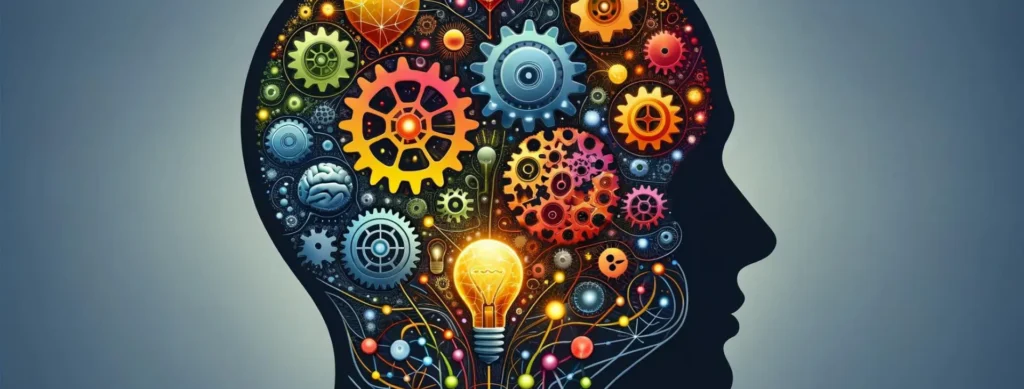We’ve all been told that setting goals is the key to success in life and in our careers. And yes, having specific targets to work towards is certainly important – it gives us direction and allows us to measure our progress.
But simply setting goals is not enough on its own to succeed. What really matters is the positive mindset, and effort we bring to pursuing those goals.
Too often, people set lofty goals for themselves but fail to actually achieve them. The reason? They approach their goals with a fixed, rigid mindset that doesn’t adapt well when obstacles inevitably get in the way. Instead of being able to flex and find alternative paths, they get stuck.
Secret to making your goals
What is a positive goal-setting mindset?
A positive goal-setting mindset is a flexible, growth-driven way of approaching personal and professional goals. It focuses on developing abilities through consistent effort, learning, and adaptation—rather than being discouraged by obstacles or rigid outcomes. This mindset helps people stay engaged and persistent as they pursue meaningful progress.
The true key to achieving your goals is cultivating a growth mindset. With this growth mindset, you understand abilities, skills and talents can be developed through dedication, education and hard work.
You stay interested and curious, and persist through setbacks – continuously improving basic abilities over time. It’s this flexible, resilient outlook that leads to lasting success beyond just ticking boxes.
The Simplicity of Goal-Setting
Writing goals down alone is ineffective. This oversimplified approach leads to forgetting them and lack of follow-through due to missing mindset preparation.
Having developed a “it’s done” mindset after writing goals down sets you up for failure. By the time comes you will forget to reinforce commitment and cultivate new skills and resilience for obstacles.
Simply documenting goals neglects the crucial mental preparation, commitment to practice, serious effort, and diligent follow-through effort required to achieve them rather than abandon them.
Resourcefulness Over Resources
Mind-setting emphasizes being resourceful, not just having resources. It’s about maximizing what you have creatively. The right mindset makes you:
- More innovative when facing obstacles, finding solutions beyond perceived constraints.
- Open to new perspectives you hadn’t considered before.
- Seeking diverse experiences to learn alternative approaches.
Proper mind-setting shapes resourcefulness by encouraging you to:
- Get feedback to spark creative problem-solving.
- See opportunities from fresh angles, broadening your outlook.
- Engage with different people/situations to gain insights for achieving goals.
The focus is cultivating a resourceful attitude that empowers a person to succeed by making the most of available resources, rather than being limited by perceived scarcity.
Goals and the Inevitability of Obstacles

A true goal involves much effort and overcoming obstacles, unlike the idea or concept of a simple to-do list. When setting meaningful goals, expect numerous set backs along the way.
Many people fail because they underestimate the obstacles – lack of early positive results, self-doubt, distractions, unexpected roadblocks. If a pursuit has no obstacles, for example, it’s likely just a task, not a real goal.
Overcoming obstacles requires resilience, adaptability, and a long-term mindset. It means persisting through plateaus, adjusting your approach, and staying focused on the vision despite setbacks. Embracing this mindset from the start prevents disillusionment and improves your chances of success.
The Power of Growth Mindset in Shaping Outcomes

Our mindset shapes how we make relationships and view our abilities. Psychologist Carol Dweck identified the difference between two mindsets: fixed mindset and the growth mindset.
People with a fixed mindset see traits as fixed and immutable and shy away from challenges due to a fear of failure. Conversely, individuals with a growth mindset perceive abilities as adaptable, developing through dedication and persistence.
This empowers individuals to take negative feedback and constructive criticism and embrace trials as opportunities for growth, fostering mental health and resilience.
A growth mindset allows obstacles to be seen as stepping stones rather than barriers, promoting a positive attitude towards self-improvement.
Understanding the Limitations of Goal Setting

Setting goals is helpful, but focusing solely on the end result has limitations. We can get fixated on the outcome of consuming goal rather than the process. When we don’t see fast progress or face adversities, for example, it’s easy to lose motivation.
Being too rigid with goals can also limit our ability for creativity and risk-taking. We may get so attached to our predetermined plan that we’re afraid to try new, potentially better approaches when they arise.
This fear of deviating from the original path prevents growth and can keep us from finding the most effective way to develop initial talents and meet our objectives.
Instead, we should embrace adversities with a flexible, growth-oriented mindset. This allows us to make new psychology, navigate obstacles with resilience and adapt our approach as needed, ultimately unlocking our full potential to reach our goals in a meaningful way.
How to develop a goal-setting mindset?
To develop a goal-setting mindset:
- Set goals that prioritize learning and growth, not just outcomes.
- Treat setbacks as opportunities for personal development.
- Seek feedback and adapt your strategies when needed.
- Stay committed through obstacles by focusing on long-term progress.
- Remain flexible and open to changing course when necessary.
Integrating Mindset with Goal Setting

To truly benefit from the new way of setting goals, you must think of goals as flexible guides rather than strict targets. Here are some key strategies for doing the best version of this:
- Set goals for learning, not just achieving specific results. Acquiring goals focus on developing your skills and personal growth. This helps keep you motivated even if you don’t meet every target.
- Embrace challenges. See them as opportunities to grow rather than obstacles. This reduces the fear of failure, since setbacks become a normal part of the learning process.
- Be willing to adjust your goals as you go. As circumstances change and you get new information, update your goals accordingly. Flexibility allows you to adapt for better overall outcomes.
- Keep persisting through obstacles. Develop resilience by continuing to work toward your goals despite setbacks. Focus on the long-term education and improvement, not getting discouraged by short-term problems.
The key difference is having such a mindset, oriented toward constant growth and improvement, rather than being rigidly focused only on currently defined targets. This flexible approach powered by persistence allows you to continuously evolve and make progress.
Why does it matter, anyway?
Adopting this flexible and growth-oriented approach to goal setting matters because it fundamentally enhances how we engage with our personal and professional lives. When we seek feedback actively, it allows us to recalibrate our efforts and strategies as the situation calls for it.
This ongoing process of adjustment keeps us out of our comfort zone, fostering continuous improvement and encouraging a proactive mindset. Such an approach not only optimizes our effort but also ensures that we are constantly evolving.
By aligning our actions with a mindset that welcomes change and challenges, we set ourselves on a path where growth is not just an outcome but a continuous journey. This dynamic way of setting and pursuing goals ensures that we remain adaptable and forward-thinking in all our endeavors.
Cognitive Functions and Their Role in Achieving Goals

Our mindset profoundly shapes core qualities like intelligence, self-belief, drive, and resilience traits. Having a serious mindset and strong sense of self-efficacy – a deep belief in our talents and ability to succeed – increases commitment to goals and equips us to overcome obstacles.
Embracing challenge with a growth mindset nurtures motivation. When we view challenges as opportunities, our intrinsic motivation and ability to solve problems for learning’s sake (not just rewards) can thrive.
How the Growth Mindset Works In studies in psychology that examine mindset, participants are given statements such as: “You have a certain amount of intelligence , and you really can’t do much to change it.” Participants who disagree with such statements are considered to have more of a growth mindset.
Cultivating a mindset celebrating mastery of effort and perseverance through practice unlocks an internal wellspring fueling unwavering determination and resilience toward goals. This mindset empowers tapping into our full potential for remarkable personal and professional achievements.
The mindset we develop directly impacts self-belief, drive, motivation, intelligence and the ability to develop will and resilience to realize our true capabilities.
Practical Applications in Personal Settings
- Embracing Criticism: Instead of feeling offended by criticism, use it as an opportunity to improve and grow.
- Learning from Failure: View failures as stepping stones to success, and use them as opportunities to learn and improve.
- Setting Realistic Goals: Set goals that provide a motivating challenge, and work towards achieving them through hard work and perseverance.
- Surrounding Yourself with Growth-Minded People: Surround yourself with people who have a growth mindset, as they can provide inspiration, support, and encouragement.
- Celebrating Small Wins: Celebrate your small wins and the successes of others, as it helps to foster a positive and growth-oriented environment.
Practical Applications in Professional Settings
- Encouraging a Growth Mindset in Employees: Foster a growth mindset in your employees by providing opportunities for learning, recognizing the value of peers and learning from them, and encouraging them to view problem as opportunities for growth1.
- Providing Constructive Feedback: Offer constructive feedback that helps employees learn from their mistakes and use them to continue learning.
- Embracing Experimentation: Encourage experimentation and trying new approaches, as it can lead to new, more efficient ways of handling responsibilities.
- Fostering a Culture of Continuous Improvement: Create a culture that supports continuous improvement, where employees are motivated to improve their skills and contribute to business growth.
- Hiring for Growth Potential: When hiring new staff, look for individuals who have a growth mindset, as they are more likely to be open to learning and development.
Cultivating Growth Mindsets for Lasting Success and Fulfillment

With a growth mindset, you see obstacles as opportunities to grow rather than failures. You understand that your abilities and intelligence are basic qualities you can improve through your hard work and dedication. This growth mindset is based on the belief that your basic qualities are things you can cultivate through your efforts. This positive growth-oriented outlook also helps you keep going when you face setbacks instead of giving up.
By combining this growth mindset with flexible, learning-focused goals, you, students and your school/workplace can achieve your specific targets. But more importantly for students, you’ll create an environment where everyone is constantly improving, learning, and feeling satisfied with their progress.
So don’t just concentrate on setting goals. Make sure you have the right mindset – one that allows for growth. This powerful combination provides a solid foundation for real, long-lasting success and a fulfilling life.

A trailblazer in humanising leadership and building high-resilience teams. As a former United Nations Peacekeeper, he leverages his high-stakes experience to redefine leadership dynamics. With a career distinguished by numerous accolades, Joseph now helps organizations thrive through a human-centric approach, enhancing performance, productivity, and workplace culture.






